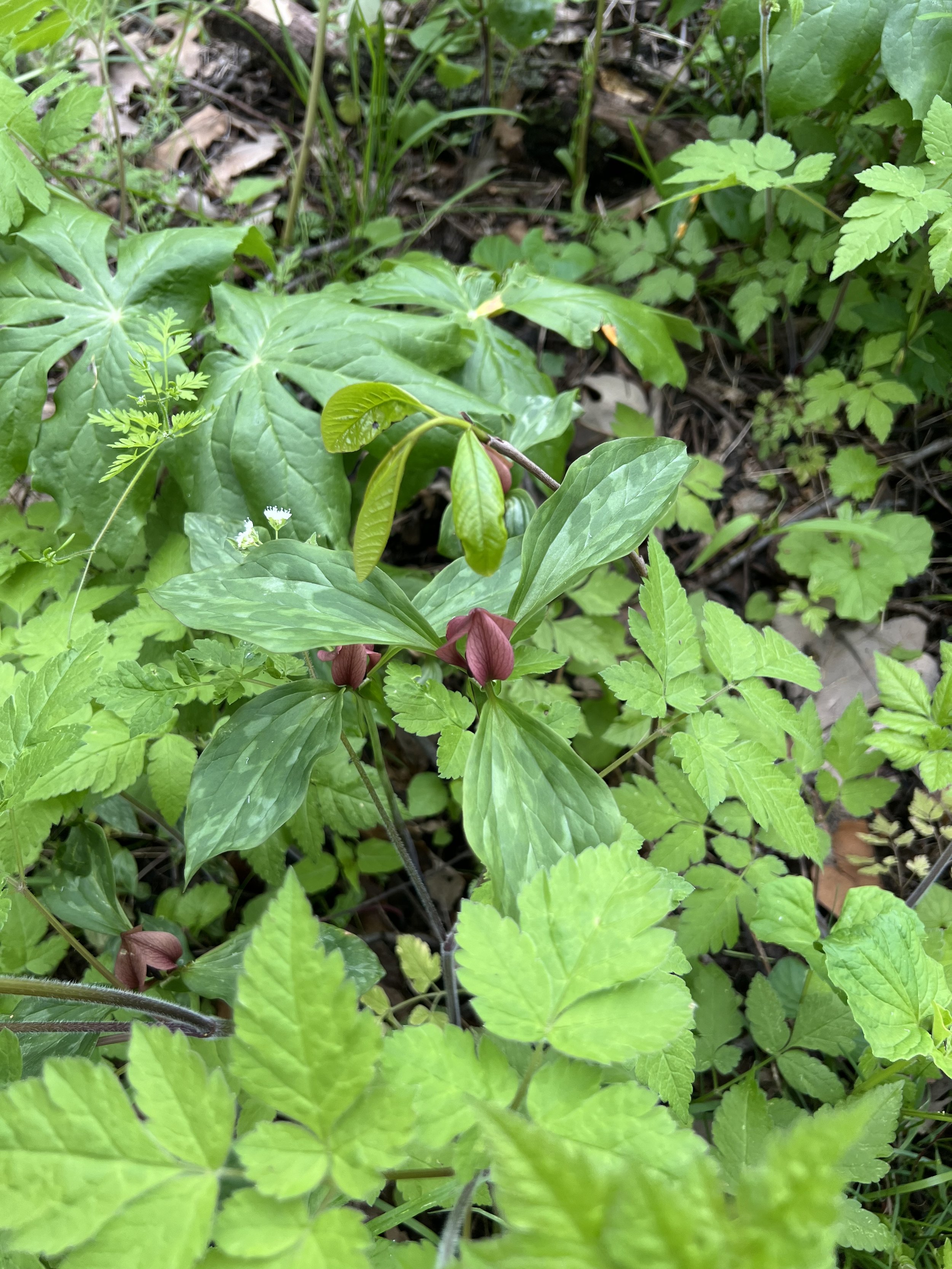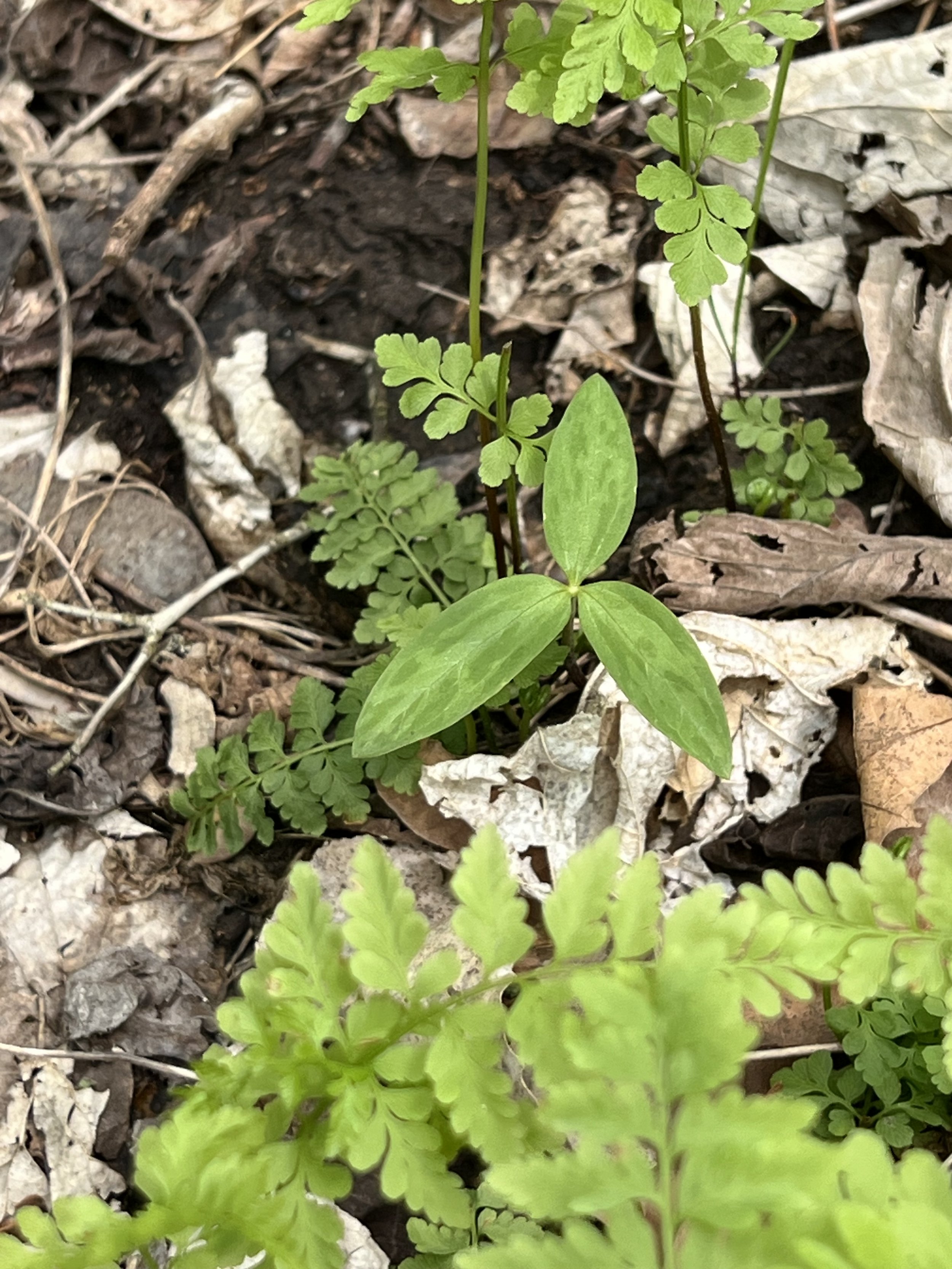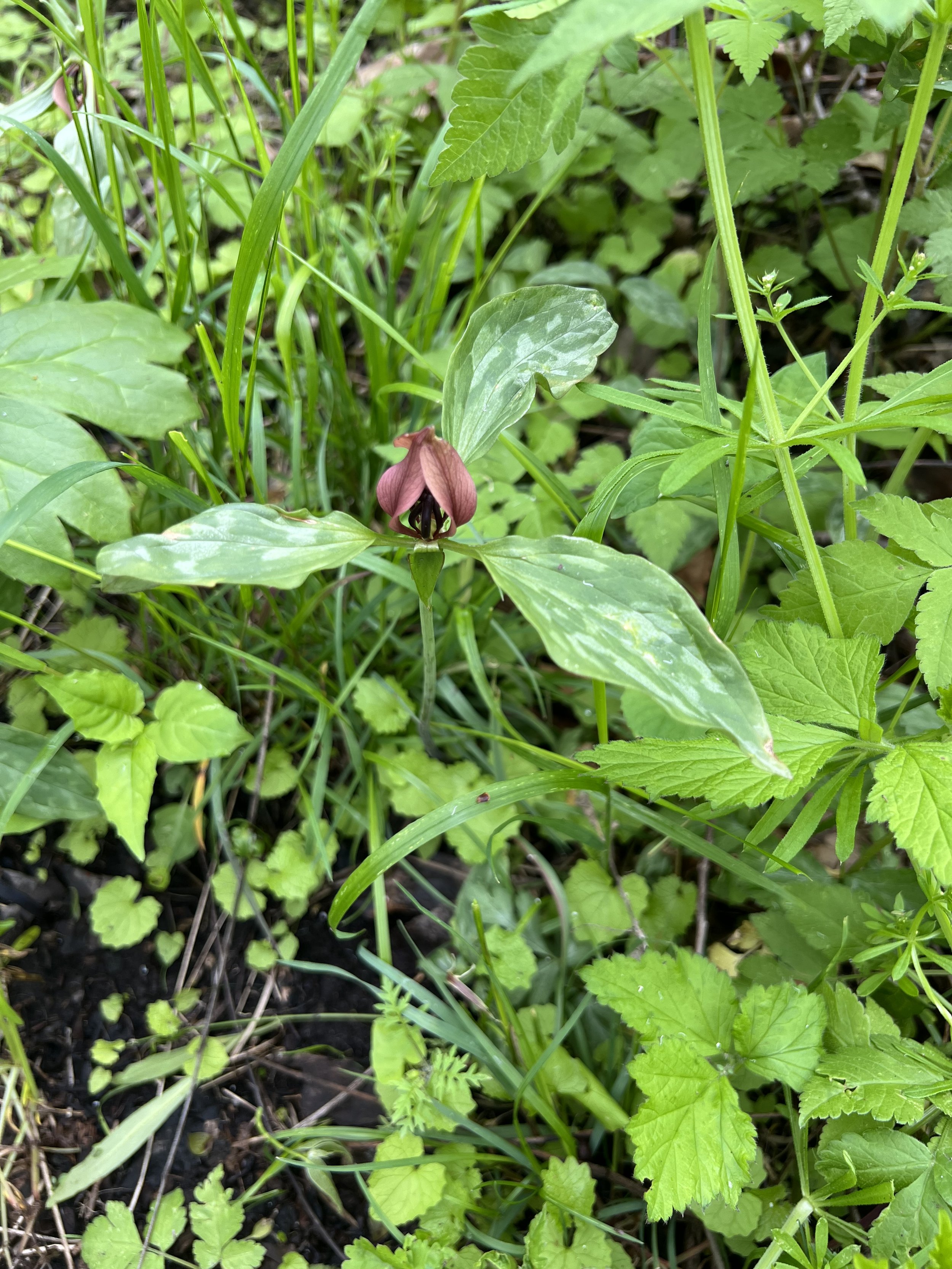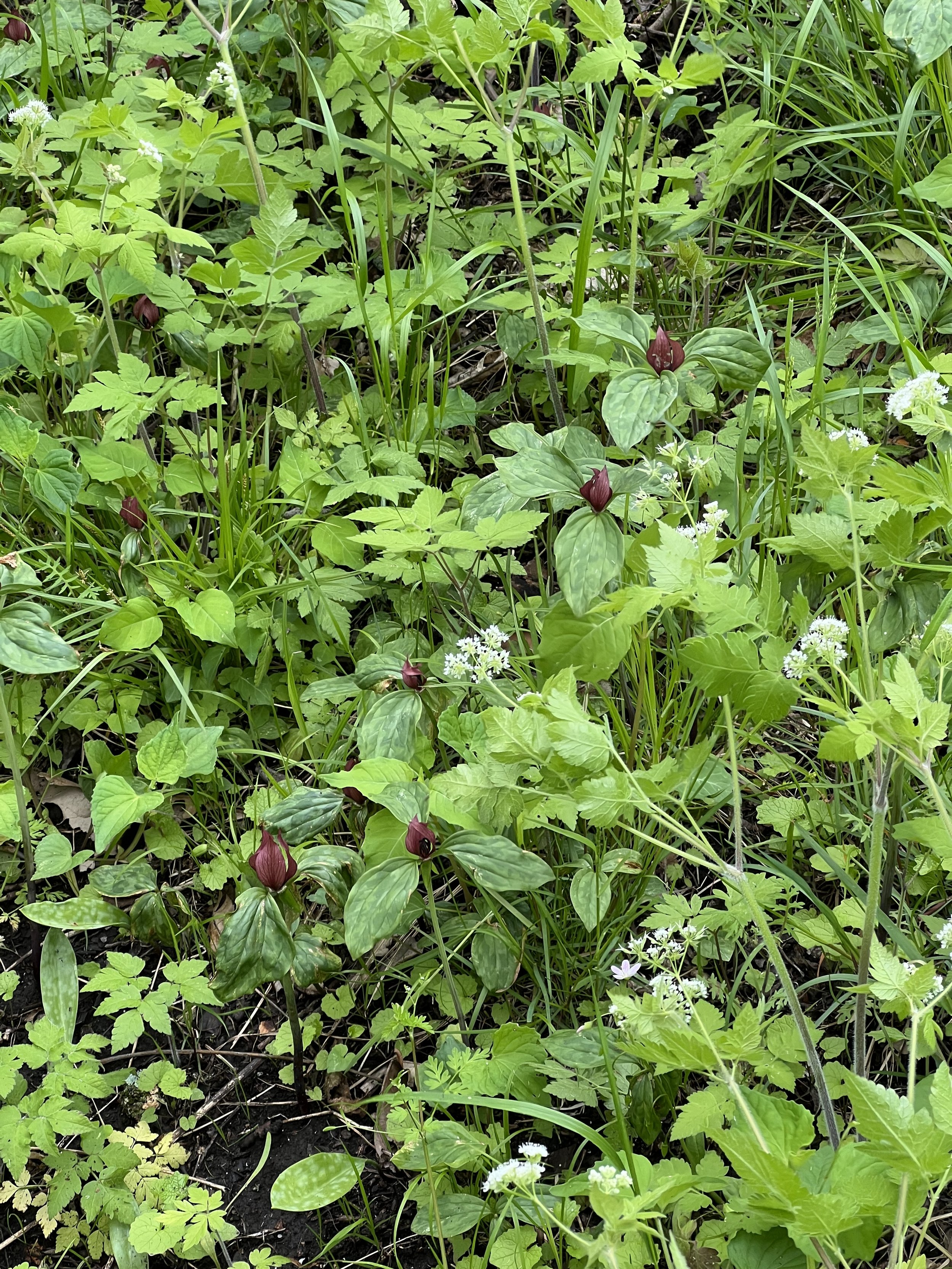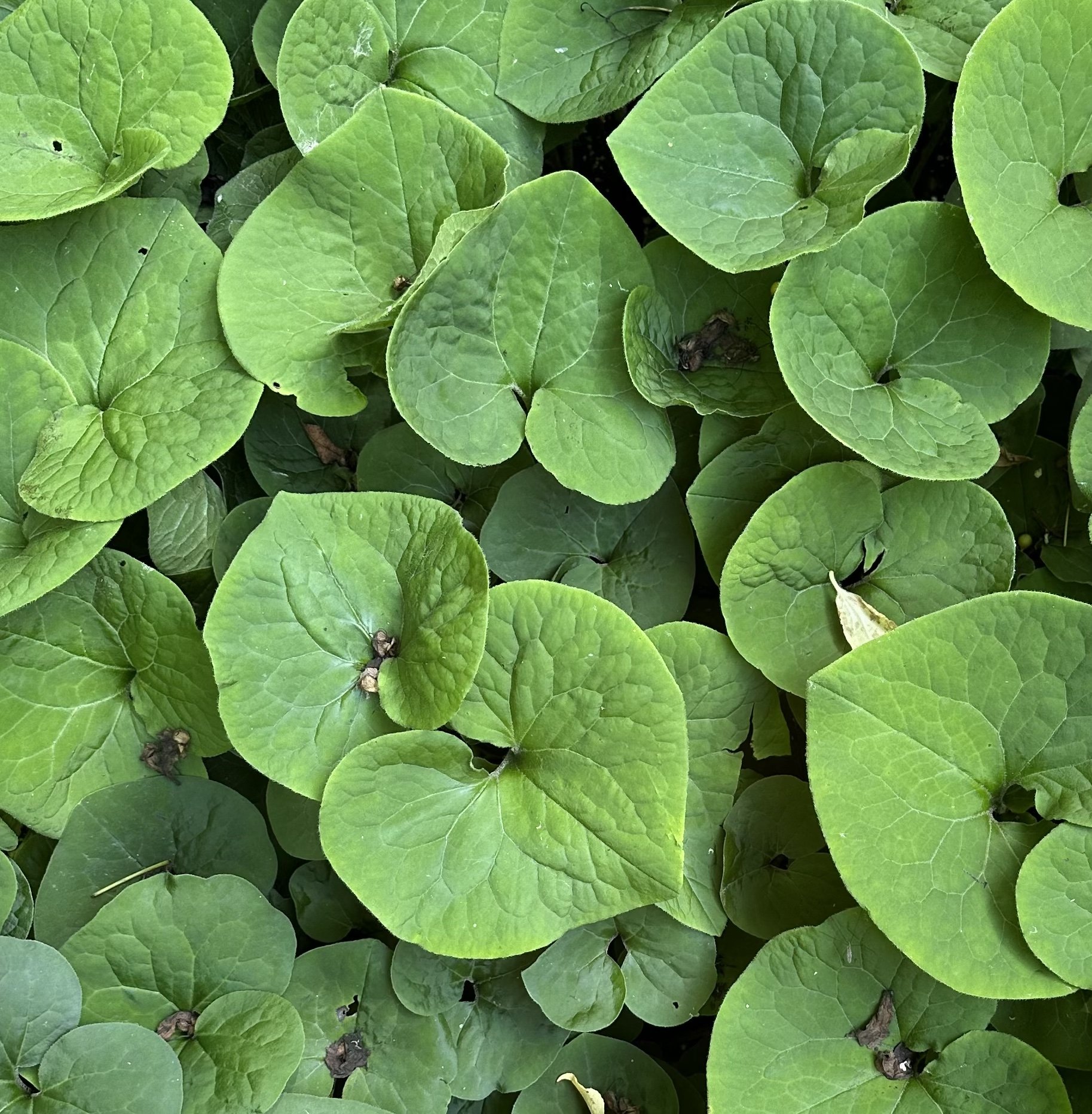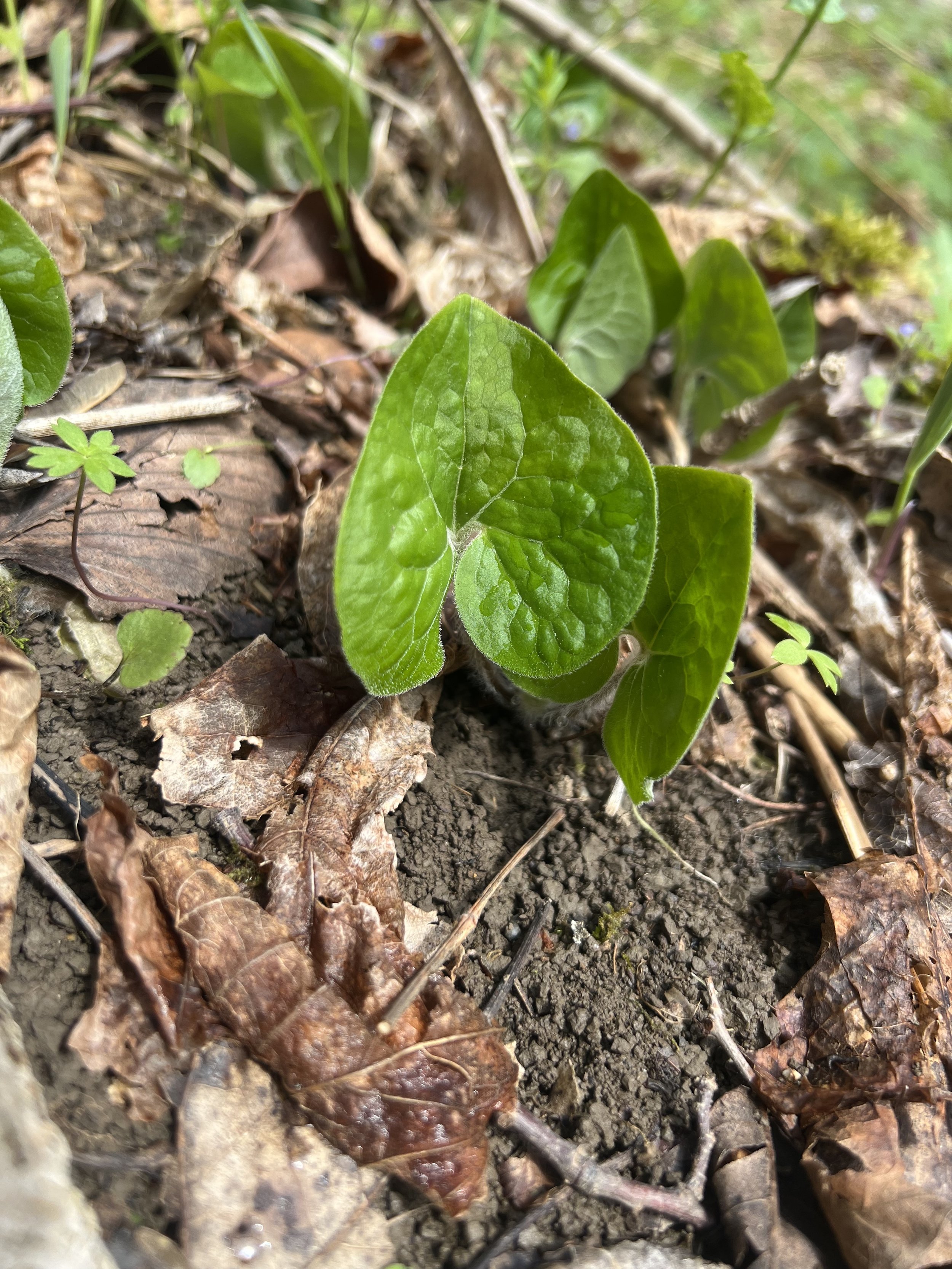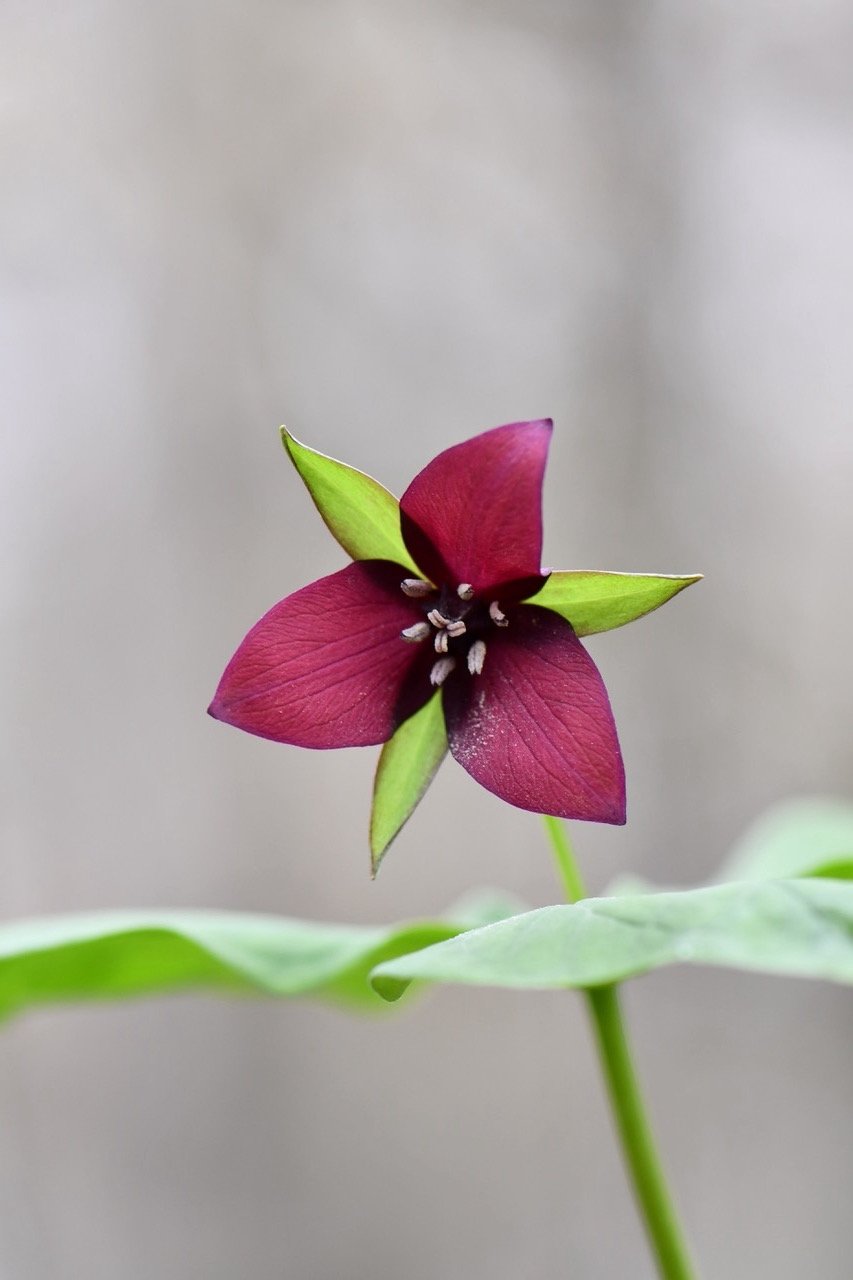 Image 1 of 5
Image 1 of 5

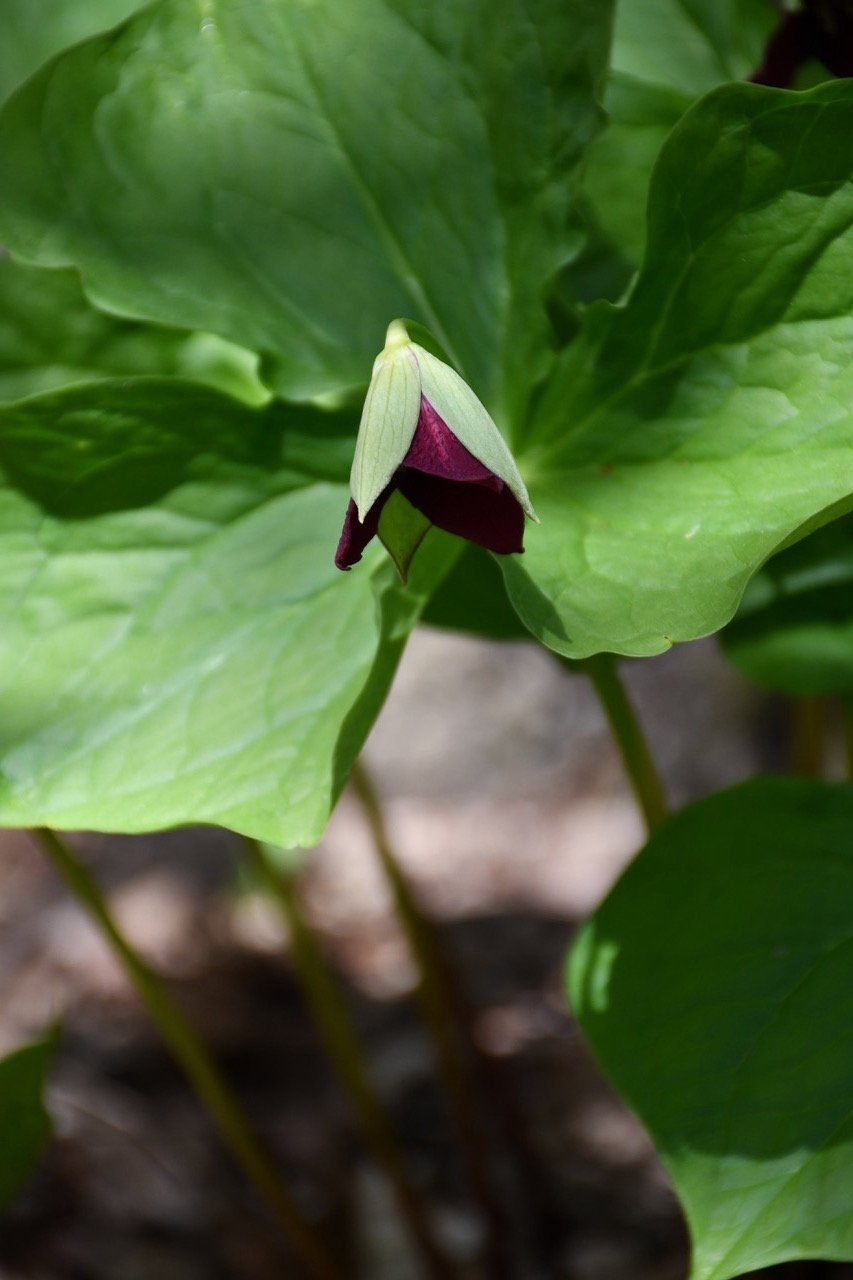 Image 2 of 5
Image 2 of 5

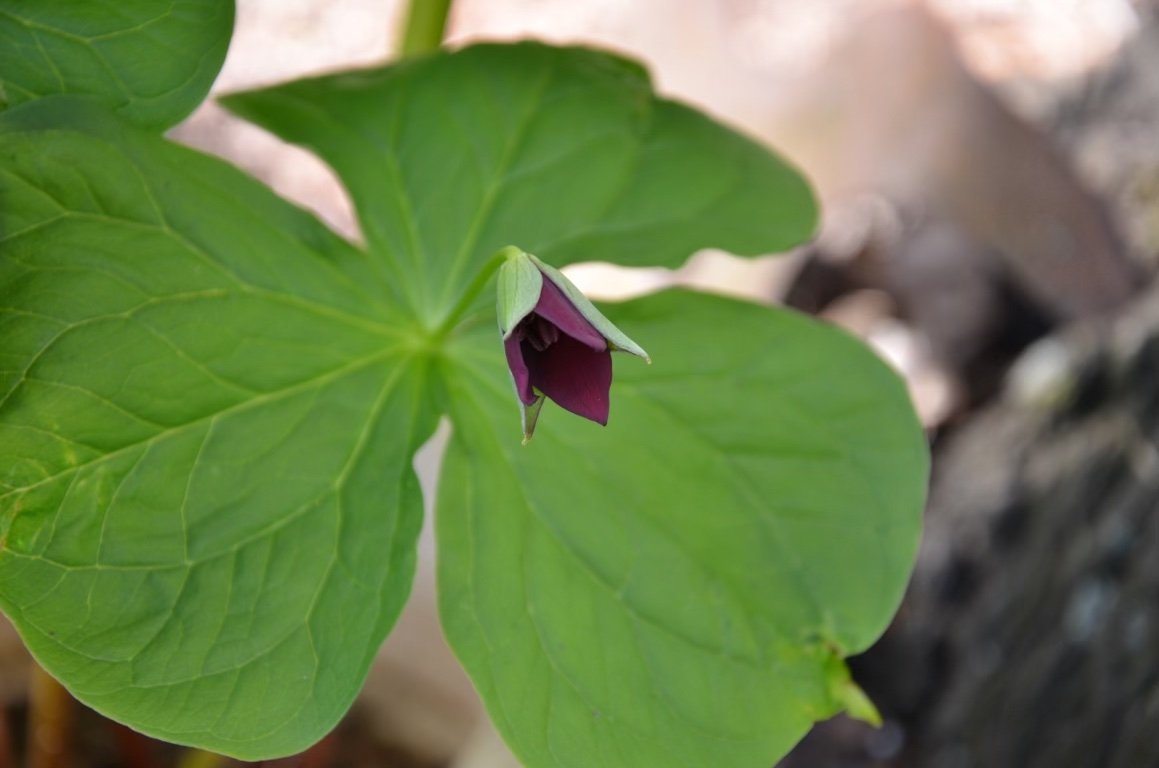 Image 3 of 5
Image 3 of 5

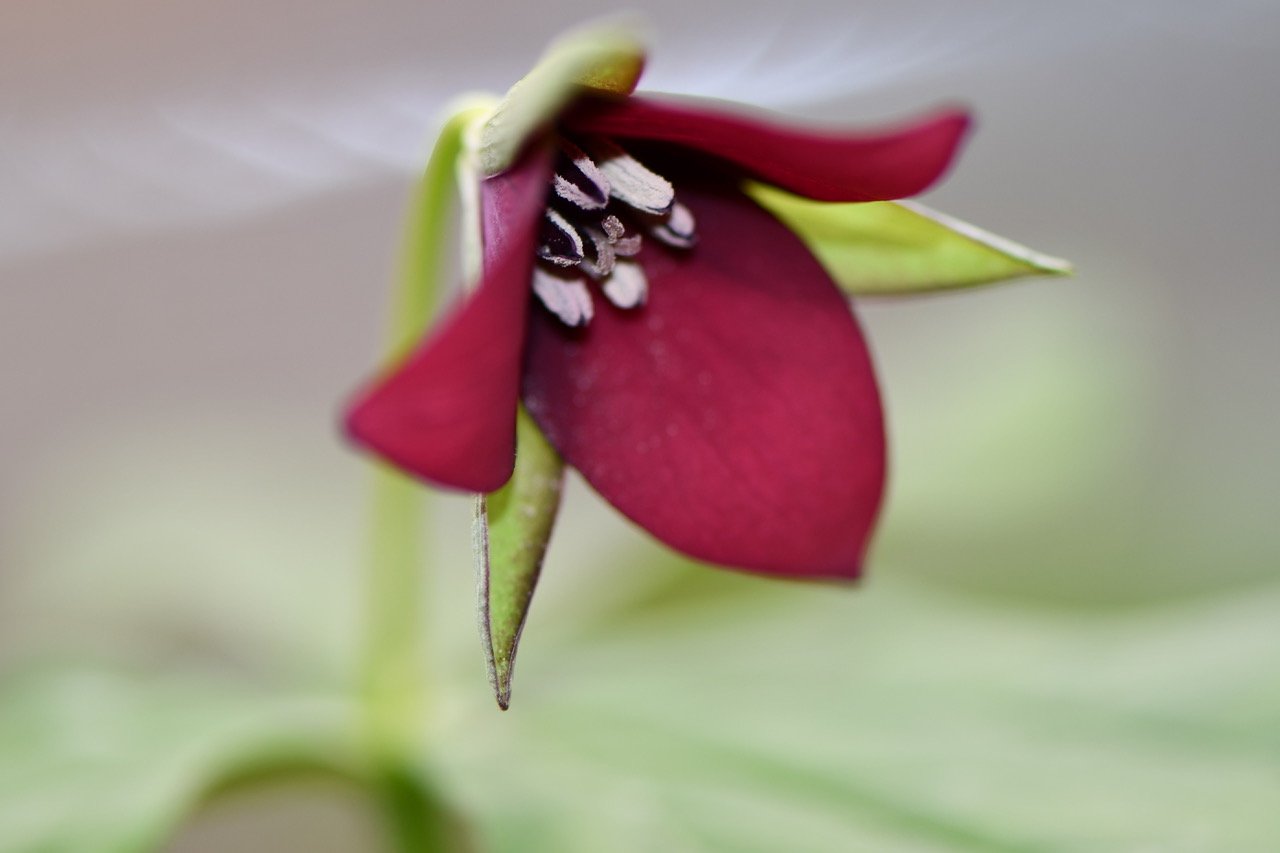 Image 4 of 5
Image 4 of 5

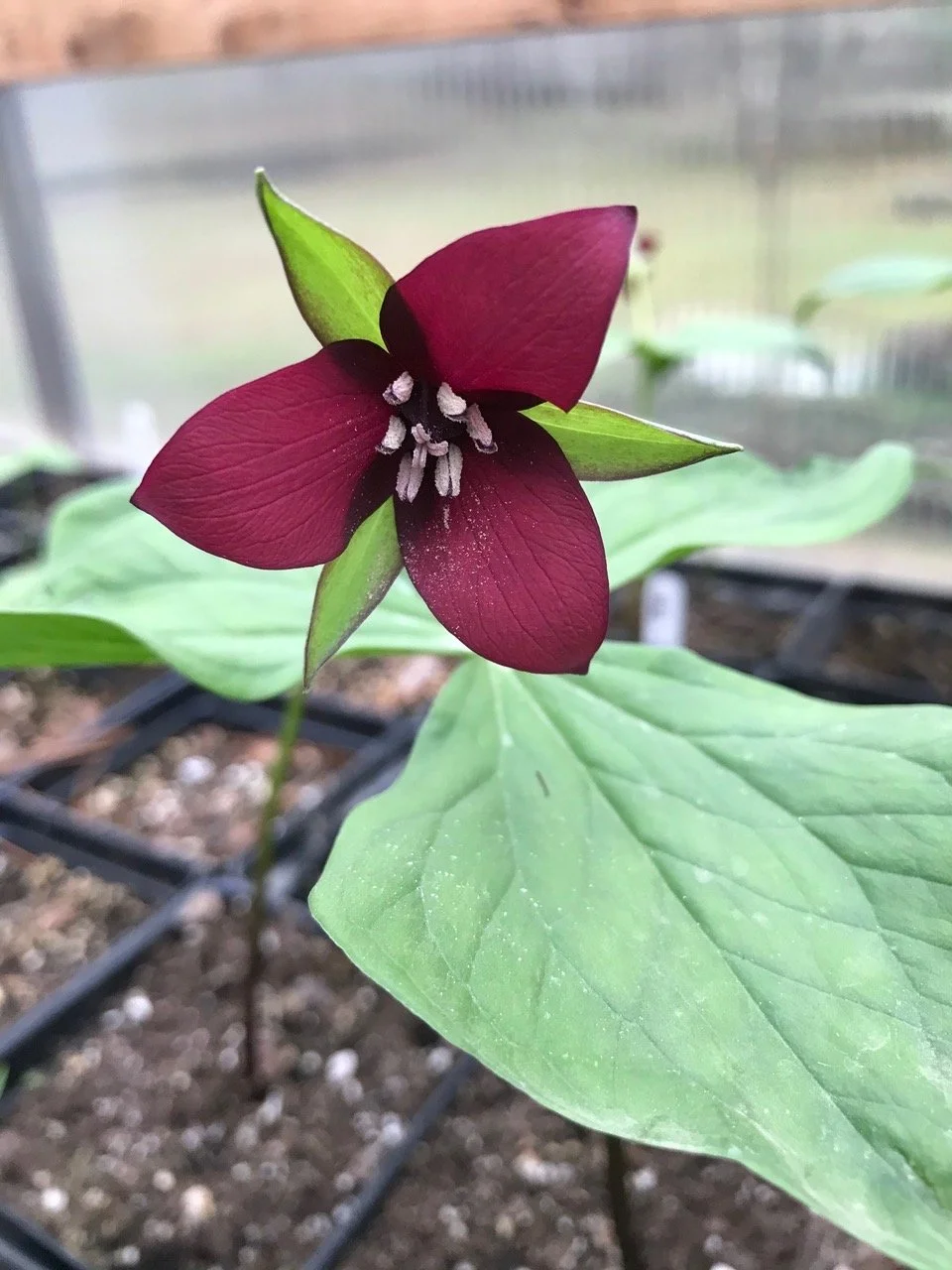 Image 5 of 5
Image 5 of 5






Red Trillium (Trillium erectum)
Red Trillium has another common name—Stinking Benjamin. This is because, for some people, the flower stinks! Some say it smells like a wet dog. You’ll have to take your own data point here.
Most plants with red flowers either attract hummingbirds, or they attract flies and beetles. Those that attract flies and beetles tend to smell stinky or even like rotting flesh which is something that many beetles and flies like.
Once while hiking in Georgia I encountered a different red trillium species. While leaning in to get a whiff, I saw dozens of small flies! The scent was certainly doing its job!
There are three other red trillium in the state: Trillium flexipes (drooping trillium). This one has a white form too. Trillium recurvatum (prairie trillium) and Trillium sessile (toadshade). Of the four red trilliums, red trillium is most visually like great white trillium, though the flowers are not as big and the range in the state is not as large. Red trillium range is focused in southeast Michigan with other scattered counties, mostly in the lower peninsula.
When the flower is open, the petals are spread wide as well as the sepals forming a six pointed star that alternates petal, sepal, petal, sepal…
Red trillium prefers light in the spring followed by shade in the summer, moist soil, and soil rich in organic material. Keep decaying leaves around the base of the plants to fulfill its needs.
As with other trillium, red trillium is vulnerable to the browsing of deer. In areas where the deer population is not controlled, this can be a real problem for all Trillium. Consider using a cage if you have deer that frequent your yard.
Red Trillium (Trillium erectum)
Michigan Flora reference page for state distribution: Red Trillium
height: 12-15 inches
bloom time: April-May
soil: medium, rich
sun: sun in spring, shade in summer
plant spacing: 15”
flower: red/burgandy
life cycle: perennial
family: Trilliaceae
Red Trillium has another common name—Stinking Benjamin. This is because, for some people, the flower stinks! Some say it smells like a wet dog. You’ll have to take your own data point here.
Most plants with red flowers either attract hummingbirds, or they attract flies and beetles. Those that attract flies and beetles tend to smell stinky or even like rotting flesh which is something that many beetles and flies like.
Once while hiking in Georgia I encountered a different red trillium species. While leaning in to get a whiff, I saw dozens of small flies! The scent was certainly doing its job!
There are three other red trillium in the state: Trillium flexipes (drooping trillium). This one has a white form too. Trillium recurvatum (prairie trillium) and Trillium sessile (toadshade). Of the four red trilliums, red trillium is most visually like great white trillium, though the flowers are not as big and the range in the state is not as large. Red trillium range is focused in southeast Michigan with other scattered counties, mostly in the lower peninsula.
When the flower is open, the petals are spread wide as well as the sepals forming a six pointed star that alternates petal, sepal, petal, sepal…
Red trillium prefers light in the spring followed by shade in the summer, moist soil, and soil rich in organic material. Keep decaying leaves around the base of the plants to fulfill its needs.
As with other trillium, red trillium is vulnerable to the browsing of deer. In areas where the deer population is not controlled, this can be a real problem for all Trillium. Consider using a cage if you have deer that frequent your yard.
Red Trillium (Trillium erectum)
Michigan Flora reference page for state distribution: Red Trillium
height: 12-15 inches
bloom time: April-May
soil: medium, rich
sun: sun in spring, shade in summer
plant spacing: 15”
flower: red/burgandy
life cycle: perennial
family: Trilliaceae
Red Trillium has another common name—Stinking Benjamin. This is because, for some people, the flower stinks! Some say it smells like a wet dog. You’ll have to take your own data point here.
Most plants with red flowers either attract hummingbirds, or they attract flies and beetles. Those that attract flies and beetles tend to smell stinky or even like rotting flesh which is something that many beetles and flies like.
Once while hiking in Georgia I encountered a different red trillium species. While leaning in to get a whiff, I saw dozens of small flies! The scent was certainly doing its job!
There are three other red trillium in the state: Trillium flexipes (drooping trillium). This one has a white form too. Trillium recurvatum (prairie trillium) and Trillium sessile (toadshade). Of the four red trilliums, red trillium is most visually like great white trillium, though the flowers are not as big and the range in the state is not as large. Red trillium range is focused in southeast Michigan with other scattered counties, mostly in the lower peninsula.
When the flower is open, the petals are spread wide as well as the sepals forming a six pointed star that alternates petal, sepal, petal, sepal…
Red trillium prefers light in the spring followed by shade in the summer, moist soil, and soil rich in organic material. Keep decaying leaves around the base of the plants to fulfill its needs.
As with other trillium, red trillium is vulnerable to the browsing of deer. In areas where the deer population is not controlled, this can be a real problem for all Trillium. Consider using a cage if you have deer that frequent your yard.
Red Trillium (Trillium erectum)
Michigan Flora reference page for state distribution: Red Trillium
height: 12-15 inches
bloom time: April-May
soil: medium, rich
sun: sun in spring, shade in summer
plant spacing: 15”
flower: red/burgandy
life cycle: perennial
family: Trilliaceae
